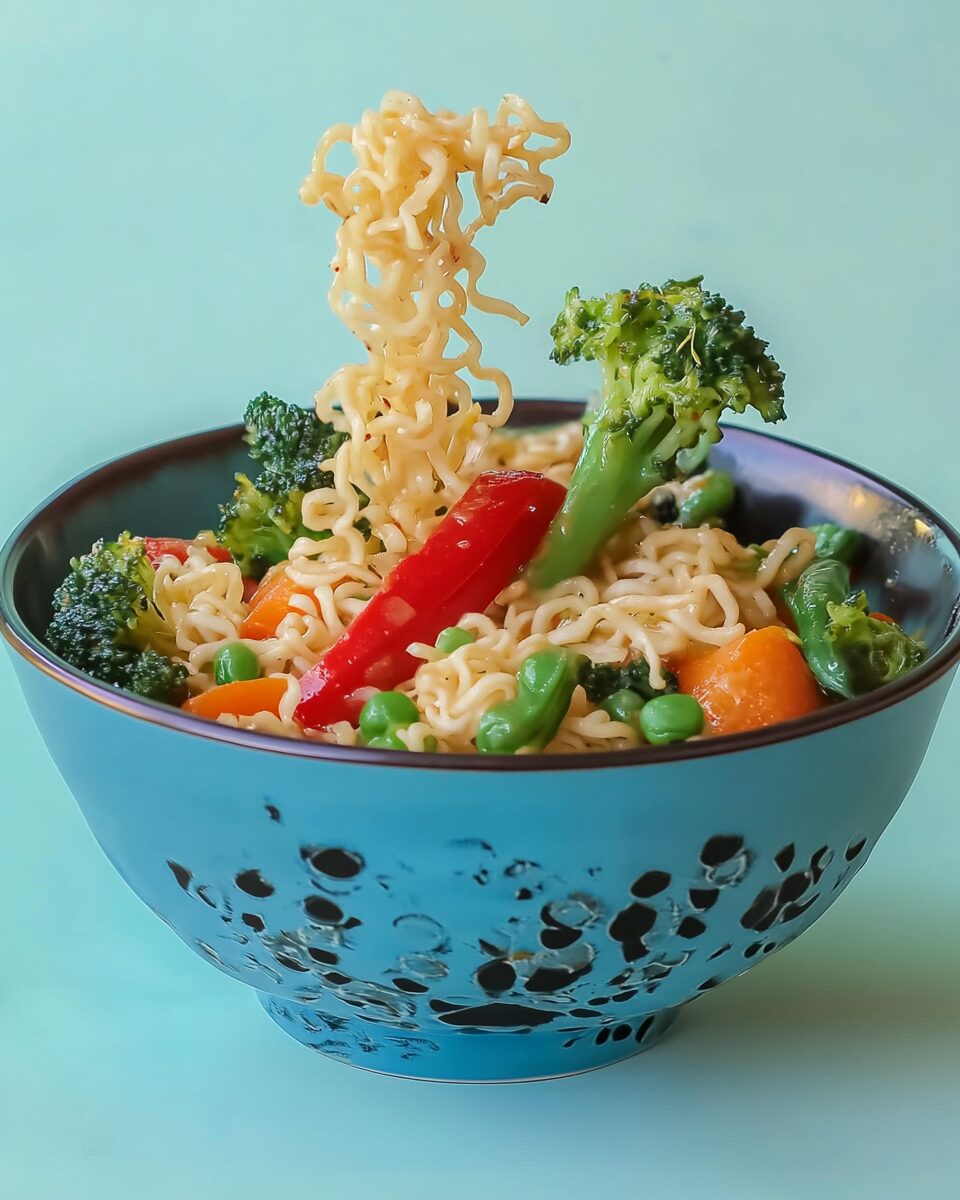Vegetable Stir-Fry with Ramen: A Wholesome Delight
Vegetable stir-fry is a beloved dish across various cuisines, known for its vibrant colors, satisfying textures, and rich flavors. When paired with ramen, it transforms into a hearty meal that is not only delicious but also nutritious. This combination offers a wonderful canvas to showcase seasonal vegetables, making it an ideal choice for those looking to incorporate more plant-based foods into their diet.
The Appeal of Stir-Fry
Stir-frying is a cooking technique that has roots in Asian cuisine, especially in China. It involves cooking food quickly at high heat in a wok or skillet, allowing the ingredients to retain their freshness and crunch. This method preserves the natural colors and flavors of vegetables, creating a visually appealing dish that is as pleasing to the eyes as it is to the palate.
One of the most significant advantages of stir-frying is its versatility. You can use a wide variety of vegetables based on what you have on hand or what is in season. Bell peppers, broccoli, snap peas, and carrots are just a few examples, but you can easily incorporate others like bok choy, mushrooms, or zucchini. This adaptability makes stir-frying an excellent way to minimize food waste and experiment with different flavor combinations.
Ramen: A Global Favorite
Ramen, originally from Japan, has become a global sensation. It typically consists of Chinese-style wheat noodles served in a meat- or fish-based broth, flavored with soy sauce or miso, and accompanied by a variety of toppings. While instant ramen is a convenient staple, fresh ramen noodles elevate the dish, offering a chewy texture that complements the crisp vegetables.
What makes ramen particularly appealing is its ability to absorb flavors from the broth and accompanying ingredients, making each bite a delightful experience. In a stir-fry context, the noodles become a perfect vehicle for soaking up the savory sauces and juices from the vegetables, creating a cohesive and satisfying dish.
Nutritional Benefits
Combining vegetables with ramen creates a balanced meal that can provide essential nutrients. Vegetables are rich in vitamins, minerals, and antioxidants, contributing to overall health. For instance, bell peppers are high in vitamin C, while broccoli is a great source of fiber and folate. By including a variety of colorful vegetables, you ensure a broader spectrum of nutrients, which is key to a healthy diet.
Ramen noodles, especially whole grain or fortified varieties, can also contribute carbohydrates for energy, making this dish suitable for athletes or anyone needing a hearty meal. When prepared with minimal oil and salt, a vegetable stir-fry can be a low-calorie option that still leaves you feeling full and satisfied.
Flavor Profiles
The flavor of a vegetable stir-fry with ramen can be easily customized to suit personal preferences. The base flavor typically comes from soy sauce, which adds umami and saltiness. Adding garlic and ginger not only enhances the taste but also brings their own health benefits, including anti-inflammatory properties and digestive support.
To elevate the flavor even further, consider incorporating additional ingredients like sesame oil, which imparts a nutty aroma, or chili paste for a kick of heat. Experimenting with different herbs and spices can also lead to exciting new flavor profiles. For instance, a sprinkle of fresh cilantro or a dash of lime juice can brighten up the dish.
Meal Preparation and Convenience
One of the greatest advantages of a vegetable stir-fry is its quick preparation time. In just 20-30 minutes, you can have a wholesome meal ready, making it a perfect option for busy weeknights. Prepping the ingredients in advance—washing, chopping, and storing them in the refrigerator—can streamline the cooking process further.
Stir-frying allows you to cook everything in one pan, reducing cleanup time. This aspect makes it particularly appealing for families or individuals looking to maximize efficiency in the kitchen without compromising on quality.
Serving Suggestions
While the vegetable stir-fry with ramen can stand alone as a satisfying meal, it can also be enhanced with additional protein sources. Tofu, tempeh, or even lean meats can be added to create a more filling dish. For those following a vegetarian or vegan lifestyle, tofu is an excellent choice, as it absorbs flavors well and provides a good source of protein.
Serving the stir-fry with a side of pickled vegetables or a fresh salad can also add variety and enhance the meal. Additionally, consider pairing it with a light soup or a refreshing drink, like green tea or a citrus-infused beverage, to round out the dining experience.
Cultural Significance
Stir-frying is more than just a cooking method; it reflects a cultural appreciation for fresh ingredients and the art of balancing flavors. In many Asian cultures, meals are a communal experience, and stir-fry dishes often take center stage. Sharing a vibrant platter of stir-fried vegetables and noodles can bring family and friends together, fostering a sense of connection and enjoyment.
Moreover, as global culinary practices evolve, the fusion of different cuisines offers exciting opportunities to innovate traditional dishes. The vegetable stir-fry with ramen is an example of how you can honor cultural roots while making the dish accessible and appealing to a broader audience.
Conclusion
The vegetable stir-fry with ramen is more than just a meal; it is an expression of creativity, health, and communal enjoyment. Its versatility allows for endless variations, making it suitable for any dietary preference or occasion. Whether you’re seeking a quick weeknight dinner or an impressive dish for guests, this stir-fry delivers on all fronts.
As you explore this recipe, consider the joy of experimenting with different ingredients and flavors. Embrace the spirit of stir-frying and let your culinary imagination run wild. By incorporating more plant-based meals into your diet, you contribute to a healthier lifestyle while celebrating the vibrant world of food. Enjoy the delightful crunch of fresh vegetables, the satisfying chew of ramen, and the rich umami flavors that make this dish a true culinary treasure.

